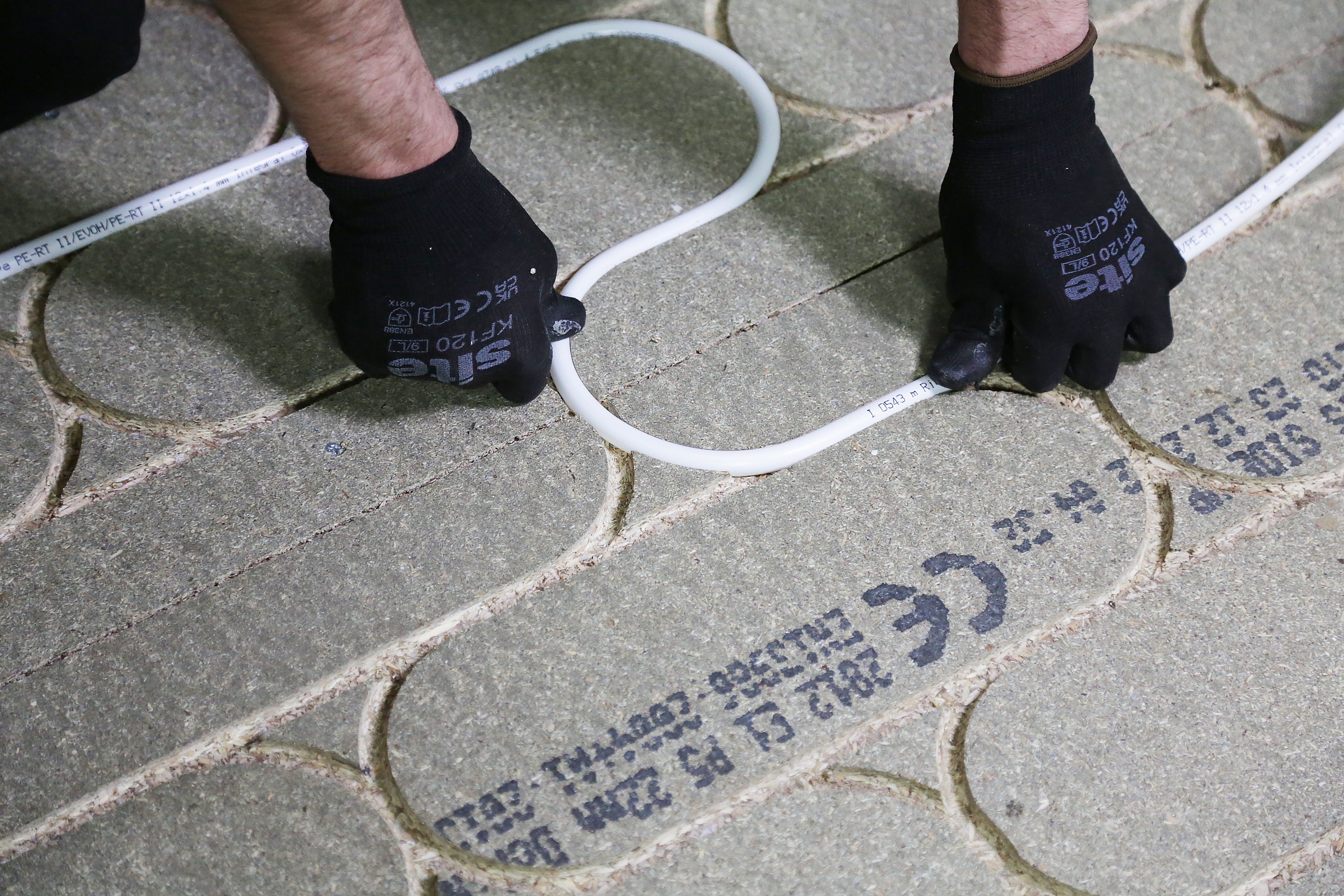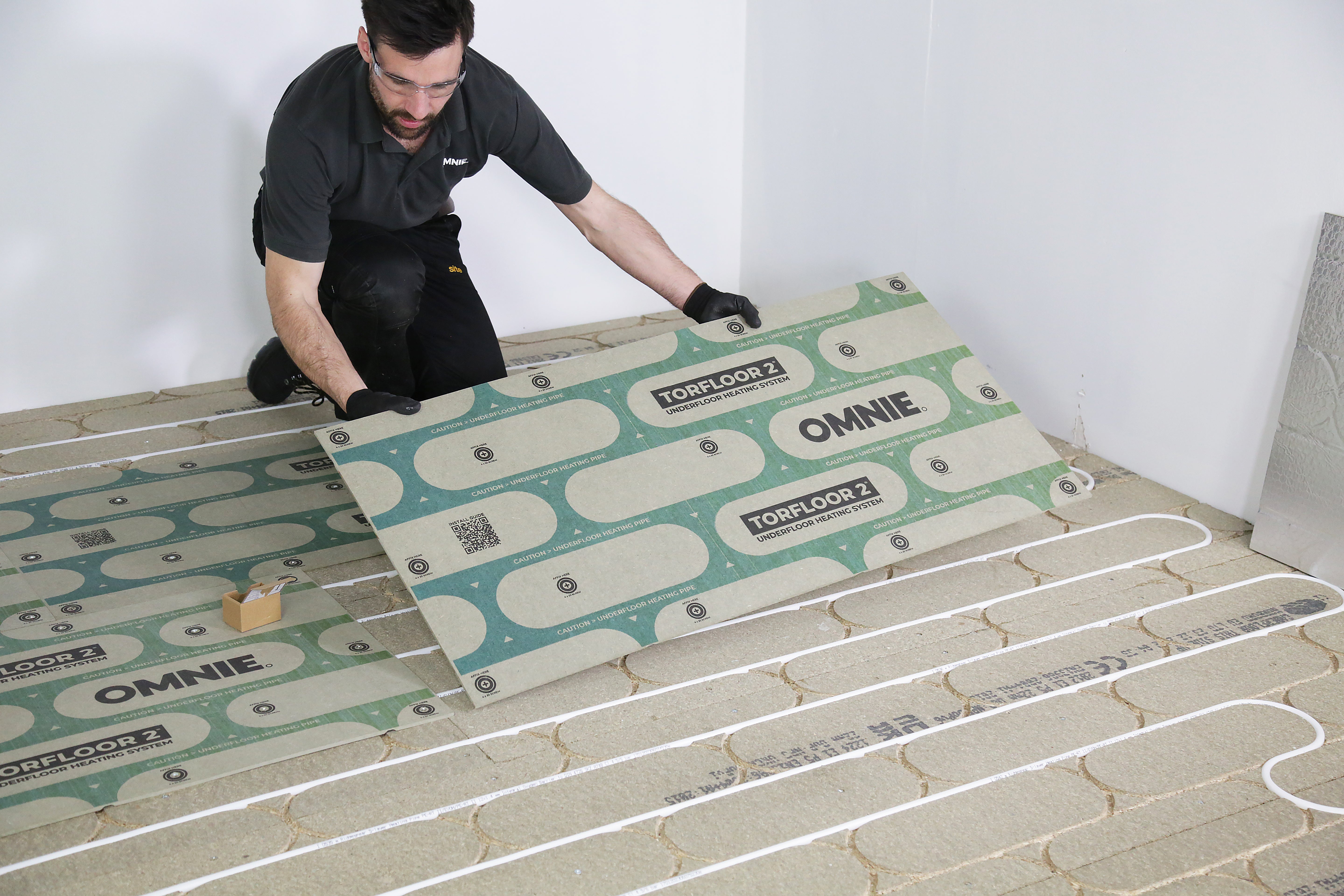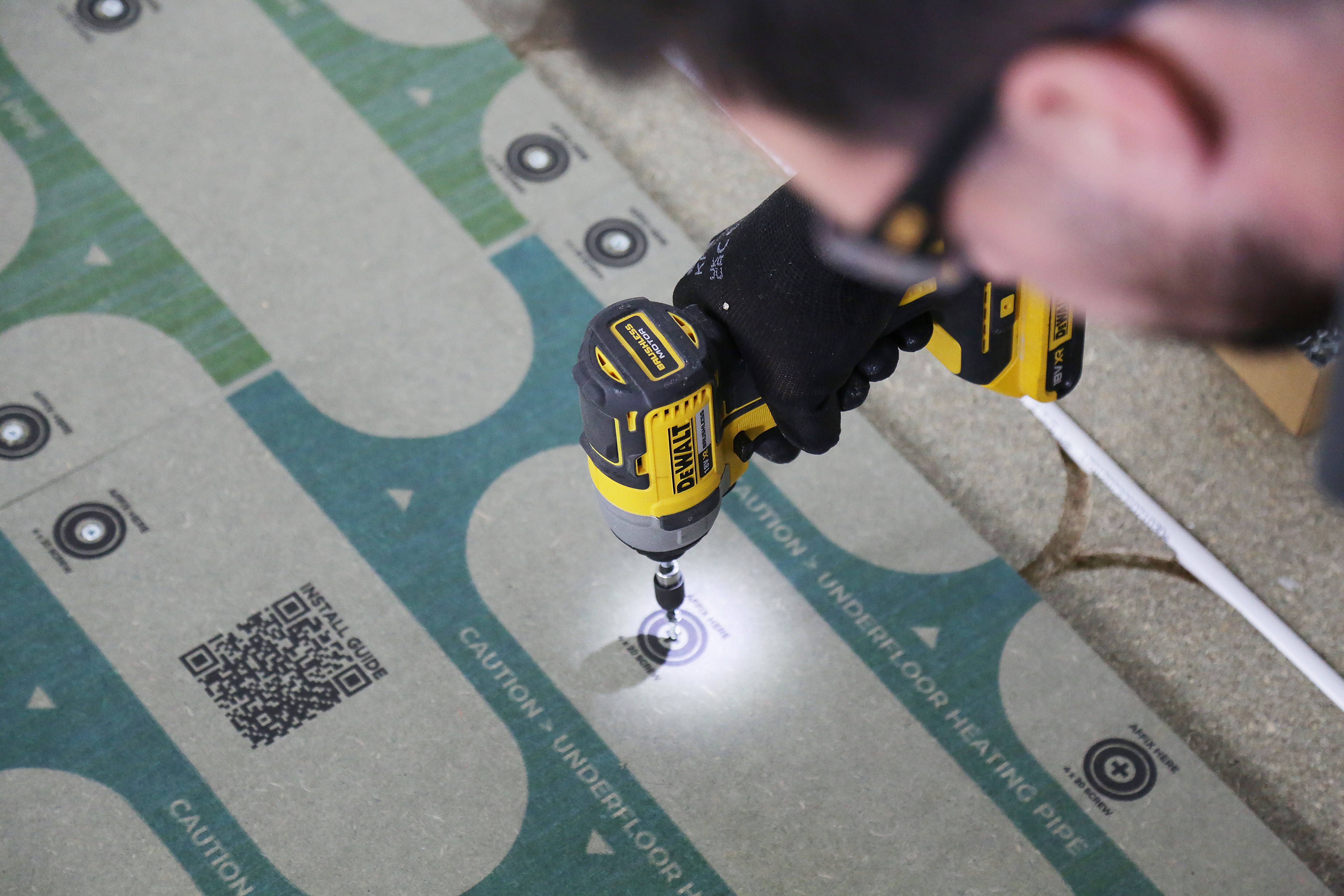Why Underfloor Heating?
Underfloor heating not only maximizes space but also outperforms traditional heating systems in terms of efficiency. While it might seem like a complex topic, the concept is straightforward: warm water is distributed through a manifold and circulated via pipes beneath the floor, delivering consistent warmth throughout the room.
Underfloor heating systems come with a host of benefits, including enhanced comfort, reduced airborne dust and allergens, and the freedom to furnish your space without the constraints of radiators. Water-based underfloor heating, in particular, lowers running costs and reduces carbon emissions, making it an eco-friendly and cost-effective choice. It works efficiently with any heat source, ensuring optimal performance and long-term savings.
Warmth & Comfort
Underfloor heating warms a room using radiant heat and this is more comfortable than heating a room by air alone, as you do with radiators. We get a similar feeling of comfort from the sun.
Wellbeing
Underfloor heating provides a balanced level of radiant heat and air warming. If the heating is provided by high air temperatures this can dry the skin and eyes. Warming the floor also reduces the occurrence of dust mites that cause allergies.
Renewables
In general, renewable heat is easier to produce efficiently at low water temperatures. Good underfloor heating uses low temperature water and this is why these systems are best suited to renewable energy.
Create a comfortable home with Underfloor Heating
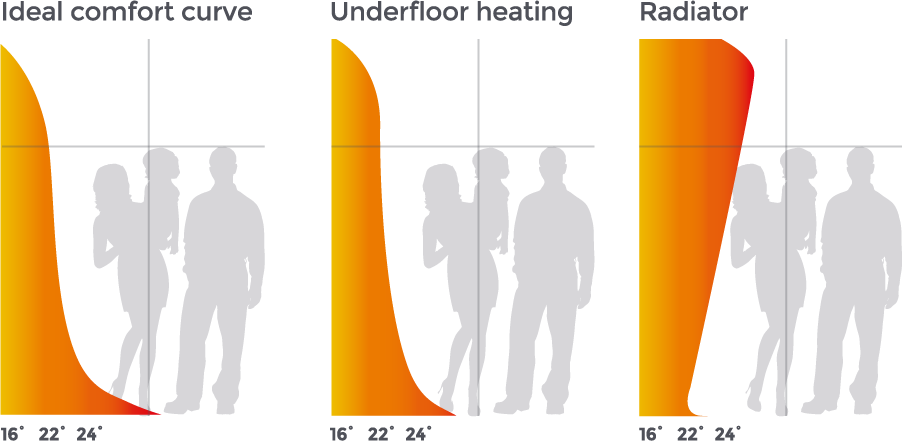
Underfloor heating works by circulating warm water through pipe embedded within the floor construction. Heat from the pipe is transferred into the floor and then into the room, providing enough warmth to heat the building all year round.
This removes the need for radiators by making more effective use of the space, as well as eliminating any high temperature surfaces. An underfloor heating system generally has a surface temperature between 25˚C and 27˚C, lower than the palm of your hand. A conventional radiator can be as hot as 75˚C.
The way in which underfloor heating transfers heat is also different to a radiator. Radiators transfer energy principally by convection, heating the air above and around the radiator causing the air to rise. As the warmed air is more buoyant than the cooler air in the room it will rise to the ceiling. The warmed air, as it crosses the ceiling, will begin to cool and then fall creating a draught.
Make savings on heat output and improve performance with UFH systems
What makes UFH different?
Key Benefits of Our Low-Profile and Dry Installation Underfloor Heating:
Slim, Space-Saving Design
Our low-profile system adds minimal height to floors, making it ideal for retrofits and renovations.
Quick Heating and Cooling
With reduced thermal mass, our system heats and cools spaces faster than traditional systems, giving you more responsive temperature control.
Energy Efficiency
Built for long-term cost savings, our hydronic systems are an eco-friendly choice with reduced energy consumption over time.
Ease of Installation
Thanks to its modular, dry-installation method, the system is easy to install, requiring less time and minimal structural adjustment.
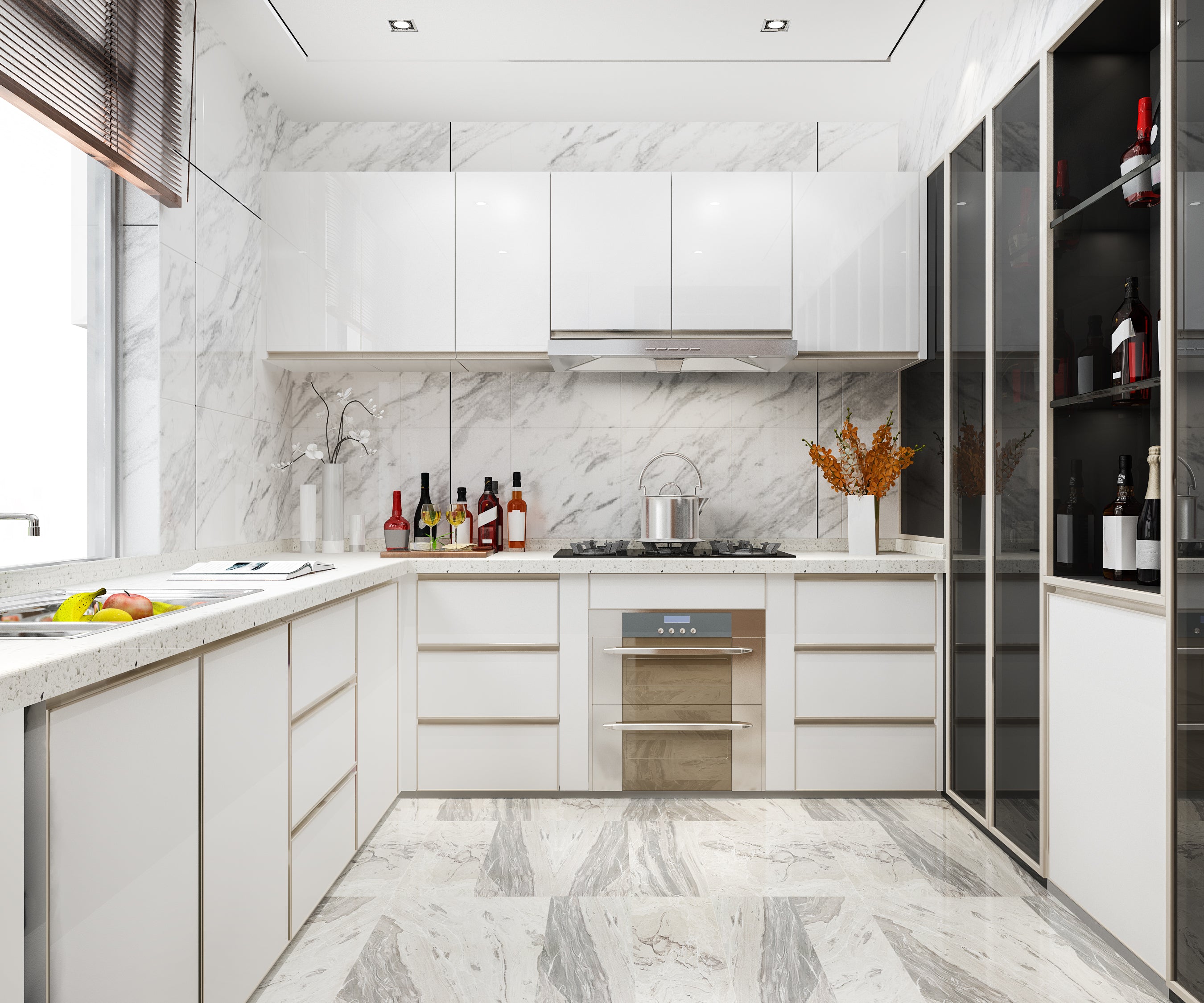
Radiators vs Underfloor Heating Comparison
- Equal or higher heat output: Underfloor heating can match or exceed the heat output of traditional radiators.
- Lower water temperatures: Operates at 35-45°C, compared to radiators requiring 60-80°C.
- Energy and carbon savings: Reduced water temperatures lower energy consumption and carbon emissions.
- Fewer draughts: Creates a more consistent and comfortable indoor environment.
- Reduced allergens: Minimises the movement of dust and allergens in the air.
- Design freedom: Allows for more flexible and creative interior design options without the need for radiators.

Electric vs Underfloor Heating Comparison
- Popular retrofit options: Both electric and water underfloor heating systems are widely used for retrofit installations.
- Electric underfloor heating: Ideal for small areas, such as a compact bathroom. Significantly more expensive to run compared to water-based systems.
- Water underfloor heating: Better suited for larger rooms or areas. Up to 60% more cost-effective to run than electric systems.
Running costs
Underfloor heating uses much lower temperatures than radiators. Only needing water at 35-45°C, saving you huge amounts on your utility bills and ready for a net-zero future.
What is SAP rating?
What is a SAP rating?
A SAP rating is a calculation to predict the energy performance for new dwellings. The SAP rating takes into account insulation levels and the types of renewable energy products used in the building. The higher the rating the better the building’s predicted energy performance.
Underfloor Heating and SAP
Underfloor heating products for timber constructions, or ‘dry constructions’, have a faster warm-up and cool down time than underfloor heating in screed floors. This reduces the possibility of overheating and improves efficiency. Also, when compared to radiators, underfloor heating is more efficient when used with a heat pump.
These factors combine so that using UFH timber underfloor heating, such as TorFloor, over conventional radiators improves the energy efficiency of the building and increases the SAP rating.


